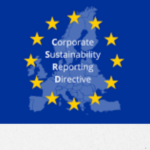Important information on EU MRL changes
- 11/08/2020
- Posted by: Gaetan Dermien
- Category: Uncategorized

This news provides updates on recent changes to EU Maximum Residue Limits (MRLs) for plant protection products (PPPs). Where an MRL has been lowered, it is important for any grower using the PPP to make any necessary adjustments in good time to ensure continued compliance with EU regulations. This may mean adapting production practices (GAP) or using alternative control methods.
It also includes a complete list of the MRL changes introduced so far in 2020, and changes applicable in 2021.
If you require additional information, or face particular problems as a result of these changes, please contact COLEACP at: network@coleacp.org (link sends e-mail)
Lowering of MRLs of chlorpyrifos and chlorpyrifos-methyl
The approval in the EU of chlorpyrifos and chlorpyrifos-methyl expired on 16 February 2020. As a result, all EU MRLs for these PPPs will be set at the limit of determination (LOD) 0.01 mg/kg.
This change was published in Regulation (EC) 2020/1085 on 24 July 2020, with a Corrigendum on 30 July 2020. The new MRLs for chlorpyrifos and chlorpyrifos-methyl will come into force on 13 November 2020; this means, in effect, that they can no longer be used after this date.
Operators in ACP countries that use these PPPs must take note of the change, and ensure that they find alternative control methods in good time. If you require further information, please contact COLEACP at: network@coleacp.org (link sends e-mail).
Change of MRLs for chlorate
Chlorates are banned in the EU and all authorizations for PPPs containing them have been withdrawn since 2009 (Decision 2008/865/EC). This means that no MRL was set, so the default MRL of 0.01 mg/kg was applicable in all food and feed.
However, the European Commission (EC) realized that this MRL was problematic as chlorate residues can also be present due to the use of chlorine-based disinfectants in food processing, or its presence in potable water used for product washing or processing. EFSA recognized that it is currently not possible, despite the application of good practice, to achieve residue levels of chlorate that comply with the default MRL of 0.01 mg/kg.
On June 8 2020, the EC published an amendment to the regulations to set MRLs for chlorate taking these uses into account. For the full list of MRLs, please see the Annex to Regulation (EU) 2020/749. These MRLs apply from June 28 2020.
Note that in case of an MRL exceedance, the grower / processor will be asked to provide evidence that the residues arose as a result of processes used (e.g. use of potable washing water) and not from the use of PPPs.
New MRL changes applicable from July 2020
On June 19 2020, the EC published a regulation setting higher MRLs for cyantraniliprole, cyazofamid, cyprodinil, fenpyroximate, fludioxonil, fluxapyroxad, imazalil, isofetamid, kresoxim-methyl, lufenuron, mandipropamid, propamocarb, pyraclostrobin, pyriofenone, pyriproxyfen and spinetoram. These new MRLs are applicable from July 9 2020.
To see details on all changes, please consult the full text here. MRL changes affecting key horticultural export crops in ACP countries are presented in Table 1, here.
On June 2020, the European Commission published 2 regulations setting new MRLs and applicable in 2021:
- COMMISSION REGULATION (EU) 2020/770 OF 8 JUNE 2020 AMENDING ANNEXES II AND III TO REGULATION (EC) NO 396/2005 OF THE EUROPEAN PARLIAMENT AND OF THE COUNCIL AS REGARDS MAXIMUM RESIDUE LEVELS FOR MYCLOBUTANIL, NAPROPAMIDE AND SINTOFEN IN OR ON CERTAIN PRODUCTS
- COMMISSION REGULATION (EU) 2020/785 OF 9 JUNE 2020 AMENDING ANNEXES II AND III TO REGULATION (EC) NO 396/2005 OF THE EUROPEAN PARLIAMENT AND OF THE COUNCIL AS REGARDS MAXIMUM RESIDUE LEVELS FOR CHROMAFENOZIDE, FLUOMETURON, PENCYCURON, SEDAXANE, TAU-FLUVALINATE AND TRIAZOXIDE IN OR ON CERTAIN PRODUCTS
Changes affecting the PPP myclobutanil for key ACP export crops are presented in Table 2, here. For details on the other active substances, please use the above links to access the regulations.
Table 3, here, presents a review of EU-MRL changes since the beginning of 2020. If you require additional information, or face particular problems as a result of these changes, please contact COLEACP at: network@coleacp.org




![EU and GB MRL changes in 2025 (January-March 2025) 9-FFM+-[ENG]](https://news.colead.link/wp-content/uploads/2024/06/9-FFM-ENG-150x150.jpg)
